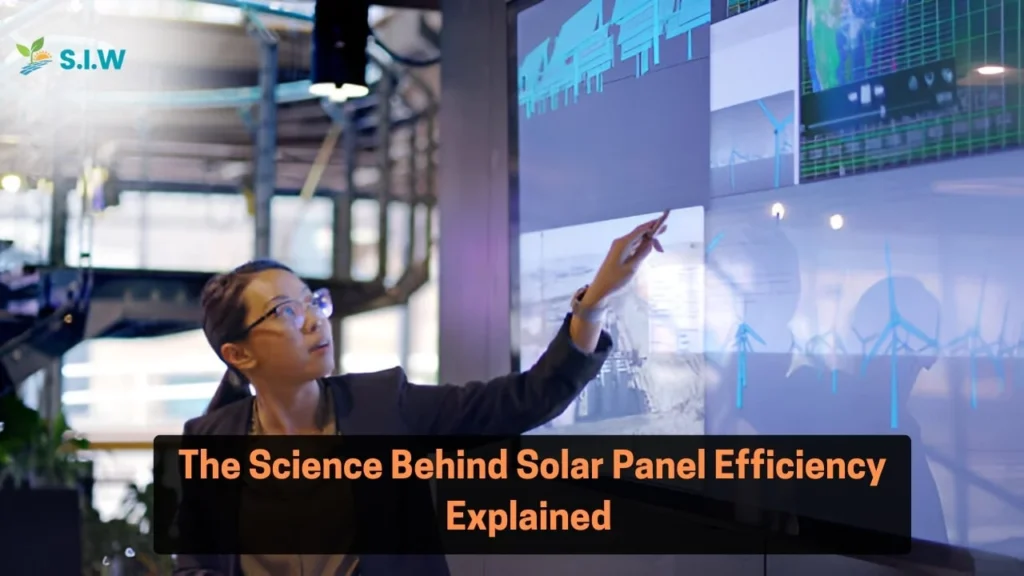Solar panels are fascinating devices that convert sunlight into electricity. They harness energy from the sun through a process known as the photovoltaic effect. In simple terms, when sunlight hits the solar panels, it excites electrons in the material (usually silicon), causing them to move and create an electric current. This process is the foundation of solar energy, and understanding how efficiency plays into it can help us appreciate the technology more deeply.
What Affects Solar Panel Efficiency?
Solar panel efficiency refers to the percentage of sunlight that can be converted into usable electricity. Various factors influence this efficiency, including:
- Type of Solar Cell: Different solar cells have varying efficiencies. Monocrystalline solar cells, for example, are known for their high efficiency (15% to 22% or more), while polycrystalline cells are slightly less efficient (13% to 16%).
- Temperature: Solar panels operate best at cooler temperatures. As the temperature rises, the efficiency tends to decrease. This means that solar panels in hotter climates may produce less electricity than those in cooler regions.
- Angle and Orientation: The position of the solar panels can significantly impact efficiency. Panels should ideally face the sun directly for the maximum exposure. Adjusting the angle based on geographical location can also optimize energy production.
- Shading: Even partial shading from trees or buildings can dramatically reduce the efficiency of solar panels. It’s essential to ensure that solar panels have unobstructed access to sunlight throughout the day.
- Dust and Dirt: Dirty solar panels can lose a significant amount of efficiency. Regular cleaning can ensure that dirt and dust do not block sunlight from reaching the cells.
- Quality of Materials: The materials used in manufacturing the solar panels greatly influence efficiency. Higher-quality materials typically lead to better performance.
The Role of Technology in Enhancing Efficiency
Advancements in technology have played a significant role in increasing solar panel efficiency. Here are a few innovations worth noting:
- Bifacial Solar Panels: These panels can absorb sunlight from both sides, increasing energy generation. Bifacial technology can boost overall efficiency by up to 20% compared to traditional panels.
- PERC Technology: Passivated Emitter and Rear Cell (PERC) technology enhances solar panel efficiency by adding a layer on the back of the solar cells. This layer reflects sunlight back into the cell, increasing the amount of light absorbed.
- Heterojunction Technology (HJT): This technology combines crystalline and thin-film solar cells to achieve higher efficiency rates. HJT panels have efficiencies ranging from 20% to 25%.
- Tracking Systems: Solar tracking systems adjust the position of solar panels throughout the day to follow the sun’s path, maximizing exposure to sunlight and, consequently, efficiency.
The Importance of Solar Panel Efficiency
The efficiency of solar panels is crucial for several reasons:
- Maximized Energy Output: Higher efficiency means more electricity generated from the same amount of sunlight. This is particularly important in areas with limited space for solar installations.
- Cost-Effectiveness: Efficient solar panels can reduce the overall cost of solar energy systems. While they may have a higher initial price, their ability to generate more electricity can lead to lower long-term costs.
- Environmental Impact: Efficient solar panels require fewer resources to generate the same amount of electricity. This means less land use, lower material consumption, and a reduced carbon footprint.
- Energy Independence: As solar technology improves, the efficiency of solar panels allows individuals and communities to rely more on renewable energy, reducing dependence on fossil fuels.
My Personal Experience with Solar Panels
When I decided to install solar panels at home, I was excited about the prospect of generating my own electricity. I researched various types of panels and settled on high-efficiency monocrystalline solar panels. One key aspect that stood out during my research was the importance of orientation and angle.
I made sure to position the panels to maximize sunlight exposure throughout the day. Additionally, I invested in a good cleaning system to keep the panels free of dust and dirt. The difference was evident. My energy bills dropped significantly, and I felt a sense of satisfaction knowing I was contributing to a greener planet.
The Future of Solar Panel Efficiency
The future looks promising for solar panel efficiency. Ongoing research aims to develop new materials and technologies to push the limits of solar energy generation. Some areas of focus include:
- Perovskite Solar Cells: These next-generation solar cells have the potential to achieve even higher efficiencies than current silicon-based panels. They are lightweight and can be manufactured at lower costs.
- Organic Photovoltaics: These flexible solar panels can be integrated into various surfaces, making them versatile for applications in urban settings.
- Recycling and Sustainability: As the solar industry grows, so does the importance of recycling old solar panels. Innovations in recycling technologies will help reduce waste and recover valuable materials for new panels.
Conclusion
Understanding the science behind solar panel efficiency is essential for anyone considering solar energy. Factors such as the type of solar cell, temperature, orientation, and technology all play a vital role in how effectively solar panels convert sunlight into electricity. As technology continues to advance, we can expect to see improvements in efficiency that will make solar energy an even more attractive option for households and businesses alike.
In my experience, choosing the right solar panel technology and ensuring proper maintenance significantly impacted energy production. With the increasing focus on renewable energy, the future of solar panels looks bright.








